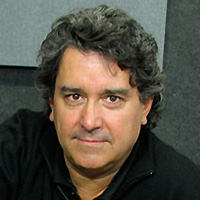Chiseling stone is an arduous task. Author Ken Follett’s novel “The Pillars of the Earth” describes how generations of stone masons would painstakingly undertake the building of a cathedral over a century or more. Carving stone takes patience. Repeated strikes with a hammer and chisel slowly develop fissures in the rock which eventually turn to cracks and ultimately, a small piece of granite falls off. An experienced stone mason looks at the stone before beginning, carefully examining the direction of the veins before selecting a tangent.
Building a business is very much the same. Rarely do we see instant success. For many entrepreneurs the wait is like watching paint dry. Unless one has the wherewithal to stay the course, one will all too often give up.
It takes a lot of hard work to get good at anything. Malcolm Gladwell wrote a book on the subject, noting that luminaries such as Microsoft co-founder Bill Gates and ice hockey great Wayne Gretzky spent 10,000 hours honing their craft until they achieved a degree of success. In my case, I started in music retail where I learned to sell, moved to pro audio where I learned to design, then to distribution where I learned to plan, travelled across Canada countless times to get to know my customers, and graduated into manufacturing while expanding travel throughout the United States and eventually the globe.
One of the most important things I learned is that just as you can’t fight mother nature, the market is always right. The most valuable teaching I derived from my PADI scuba-diving classes was the way currents work on the shoreline. The instructor started by saying there is no such thing as a rip tide. The ocean is made up of currents, and more often than not, people drown due to exhaustion as they attempt to overpower the ocean’s current, not their inability to swim.
I recall being on a beach in Barbados when my daughter Darryn – a very good swimmer – got caught in the current. She was panicking as the current was pulling her out to the ocean along a jetty. No matter how hard she swam, she could not fight the power of the ocean. I swam out, had her follow me around the jetty where current was swirling back towards the shore. We both suffered some cuts and scrapes as we climbed out on the other side of the stone jetty but lived to tell the tale.
Shifting Forces
In early 1992, we launched Cabletek, the forerunner to Radial Engineering. The first thing I did was set out a marketing plan that included putting together a catalog of products, a detailed price list and whatever marketing materials we could muster up. I then put together a list of clients and mailed out several hundred packages to music stores, sound companies and large recording studios. Our “mantra” was providing products that were better at transmitting sound without artifact while also being better at eliminating noise.
The packages went out in February and then we waited… and waited. And then waited some more. Nothing happened. People hate change. Just because a brochure shows up in the mail is usually not enough of a reason to change the “speed dial” on the phone.
But then all of a sudden, orders began to come in. Sales went from about $5,000 a month to $15,000 pretty much overnight and continued to blossom from there. What happened? In our case, affordable digital recording systems such as the Alesis ADAT and Tascam DA88 began to appear and noise that in the past that may have been masked by tape-hiss was now apparent. Mogami cable became the go-to brand for the most demanding recording studios.
Simultaneously, artists were demanding larger mixing consoles with more audio channels to bring their studio production on the road. To address the need, we created a large-format concert snake called the Radial Convertible that had more channels than the competition and was outfitted with Jensen transformers. Disruption in the market created an opportunity.
However, one can’t count on disruption to open doors. Sometimes, it’s more about staying the course. Many attribute The Rolling Stones’ success to simply being there – for being a consistent force.
During talks with our sales team, I would often draw a large cruise ship heading north and then a small rowboat pushing northwest, exerting a huge amount of energy with the impossible task of shifting the ship’s direction. I would explain: “The ship is the market while the rowboat is our company. Just as it’s super hard to move the market in our direction, once the ship is on course, it’s equally as hard for another company to push it off course.”
More Than Pricing
Before Radial came along, a direct box was simply an afterthought interface. We conducted hundreds of educational clinics and generated market awareness expounding of the importance of a good direct box and after years of hard work (10,000 hours!), created a new retail category.
With this newfound opportunity, a major pro audio brand decided to get into the direct box game. To give one a sense of scope, this brand is a division of a conglomerate, one of the largest audio manufacturers on the globe with sales of over $1 billion.
To break into the market, this brand offered Guitar Center (GC), the world’s largest music retail chain, an amazing price. Because Radial was the market leader and had several SKUs that ranged from $99 to $199, GC asked us to respond with a counteroffer. I told the buyer that Radial was not a discount product and that professionals choose Radial because the product works. Folks do not buy on price alone.
He did not seem to care, insisting we either match the price or suffer the consequences. I held my ground. GC proceeded to order thousands of our new competitor’s direct boxes for its stores only to eventually return them because they didn’t sell. The combined power of largest retailer and the largest manufacturer could not cause a market shift. This puts in perspective how powerful market currents can be and how difficult they are to shift once in motion.
Building a rock-solid foundation for a business or a cathedral takes a lot of hard work, careful attention to detail and the ability to take advantage of market disruptions when the occur. These forces can eventually shift the currents in the market… just be patient!















